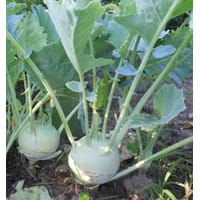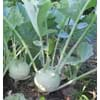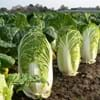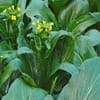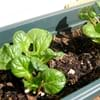Life Span
Annual or Biennial
Perennial
Origin
Western Europe
India, China
Types
Not Available
Bead tree
Number of Varieties
Not Available
Habitat
agricultural areas, gardens, Wet ground
Forest margins, Roadsides
USDA Hardiness Zone
1-6
8-15
Sunset Zone
A1, A2, A3, H1, H2, 1a, 1b, 2a, 2b, 3a, 3b, 4, 5, 6, 7, 8, 9, 10, 11, 12, 13, 14, 15, 16, 17, 18, 19, 20, 21, 22, 23, 24
H1, H2, 6, 7, 8, 9, 10, 11, 12, 13, 14, 15, 16, 17, 18, 19, 20, 21, 22, 23, 24
Habit
Upright/Erect
Oval or Rounded
Flower Color
Not Available
Lavender
Flower Color Modifier
Bicolor
Bicolor
Fruit Color
Not Available
Yellow
Leaf Color in Spring
Green, Light Green
Green, Dark Green
Leaf Color in Summer
Green, Purple
Dark Green
Leaf Color in Fall
Green, Purple
Dark Green
Leaf Color in Winter
Green, Purple
Dark Green
Plant Season
Not Available
Spring, Summer, Fall, Winter
Sunlight
Full Sun, Partial Sun
Full Sun, Partial Sun, Partial shade
Type of Soil
Loam, Sand
Clay, Loam, Sand
The pH of Soil
Neutral
Acidic, Neutral, Alkaline
Soil Drainage
Well drained
Average
Bloom Time
Not Available
Early Spring, Spring, Late Spring
Tolerances
Drought
Cold climate, Drought, Pollution, Soil Compaction, Variety of soil types
Where to Plant?
Container, Ground
Ground
How to Plant?
Seedlings
Rooted stem cutting, Seedlings, Stem Planting
Plant Maintenance
Medium
Low
Watering Requirements
Keep ground moist, Use Mulches to help prevent water loss during hot and windy weather
Average Water Needs, Medium, Requires regular watering, Requires watering in the growing season, Water daily during growing season, Water less during winter
In Summer
Lots of watering
Ample Water
In Spring
Moderate
Less Watering
In Winter
Average Water
Less Watering
Soil pH
Neutral
Acidic, Neutral, Alkaline
Soil Type
Loam, Sand
Clay, Loam, Sand
Soil Drainage Capacity
Well drained
Average
Sun Exposure
Full Sun, Partial Sun
Full Sun, Partial Sun, Partial shade
Pruning
No pruning needed in the early stages, Remove dead leaves
Prune if you want to improve plant shape, Remove damaged leaves, Remove dead leaves, Remove dead or diseased plant parts, Remove deadheads
Fertilizers
organic fertlizers, Potassium
Fertilize every year, fertilize in growing season, Less fertilizing
Pests and Diseases
Alternaria Leaf Spot, Aphids, Cabbage looper, Downy mildew, Leaf spot, Mites, Red blotch
Insects, Red blotch
Plant Tolerance
Frost, Shallow soil
Cold climate, Drought, Variety of soil types
Flower Petal Number
Single
Single
Fragrant Bark/Stem
Yes
No
Foliage Texture
Bold
Coarse
Foliage Sheen
Matte
Glossy
Attracts
Aphids, Beetles, Flying insects
Birds, Butterflies
Allergy
Digestive Problems, sneezing, Swelling in the face
Toxic
Aesthetic Uses
Not Used For Aesthetic Purpose
Beautification, Landscape Designing, Showy Purposes
Beauty Benefits
For treating wrinkles, Weightloss
No Beauty Benefits
Environmental Uses
Food for animals, No fertilizer, pesticides, or herbicides needed
Absorbs greenhouse gases, Absorbs huge amounts of CO2, Air purification, Amazing growth rate, Erosion control, Food for birds, Food for insects, Forms dense stands, Nesting sites for birds, No fertilizer, pesticides, or herbicides needed, Prevent Soil Erosion, Shadow Tree, Shelter for wildlife, Soil protection, soil stabilisation, Used to establish native woodland, Very little waste, Wildlife, Windbreak
Medicinal Uses
Anemia, Diabetes, Digestion problems, Increase fiber amount, Kidney Stones, Minerals, Weight loss
No Medicinal Use
Part of Plant Used
Leaves, Stem
Seeds, Stem, Tree trunks
Other Uses
Can be made into a herbal tea, Used As Food, Used for its medicinal properties
Air freshner, Showy Purposes, Used as firewood, Used as Ornamental plant, Wood is used for making furniture, Wood is used for ship building, Wood is used fore making tools, Wood is used in construction, Wood log is used in making fences
Used As Indoor Plant
No
No
Used As Outdoor Plant
Yes
Yes
Garden Design
Edible, Herb / Vegetable
Shade Trees
Botanical Name
BRASSICA oleracea 'Dyna'( Gongylodes Group)
MELIA azedarach
Common Name
Kohlrabi
Chinaberry Tree
In Hindi
नवलकोल
Chinaberry ट्री
In German
Kohlrabi
Chinaberry -Baum
In French
Chou-rave
Chinaberry Arbre
In Spanish
Brassica oleracea gongyloides
Chinaberry Arbre
In Greek
Kohlrabi
chinaberry Δέντρο
In Portuguese
Kohlrabi
azederaque
In Polish
Kalarepa
azederaque
In Latin
Kohlrabi
Chinaberry ligno
Phylum
Magnoliophyta
Magnoliophyta
Class
Magnoliopsida
Magnoliopsida
Order
Capparales
Sapindales
Family
Brassicaceae
Meliaceae
Clade
Not Available
Angiosperms, Eudicots, Rosids
Tribe
Not Available
Melieae
Subfamily
Not Available
Meloideae
Number of Species
Not Available
Not Available
Importance of Kohlrabi and Chinaberry Tree
Want to have the most appropriate plant for your garden? You might want to know the importance of Kohlrabi and Chinaberry Tree. Basically, these two plants vary in many aspects. Compare Kohlrabi and Chinaberry Tree as they differ in many characteristics such as their life, care, benefits, facts, etc. Every gardener must at least have the slightest clue about the plants he wants to plant in his garden. Compare their benefits, which differ in many ways like facts and uses. The medicinal use of Kohlrabi is Anemia, Diabetes, Digestion problems, Increase fiber amount, Kidney Stones, Minerals and Weight loss whereas of Chinaberry Tree is No Medicinal Use. Kohlrabi has beauty benefits as follows: For treating wrinkles and Weightloss while Chinaberry Tree has beauty benefits as follows: For treating wrinkles and Weightloss.
Compare Facts of Kohlrabi vs Chinaberry Tree
How to choose the best garden plant for your garden depending upon its facts? Here garden plant comparison will help you to solve this query. Compare the facts of Kohlrabi vs Chinaberry Tree and know which one to choose. As garden plants have benefits and other uses, allergy is also a major drawback of plants for some people. Allergic reactions of Kohlrabi are Digestive Problems, sneezing and Swelling in the face whereas of Chinaberry Tree have Toxic respectively. Having a fruit bearing plant in your garden can be a plus point of your garden. Kohlrabi has no showy fruits and Chinaberry Tree has showy fruits. Also Kohlrabi is not flowering and Chinaberry Tree is not flowering . You can compare Kohlrabi and Chinaberry Tree facts and facts of other plants too.
